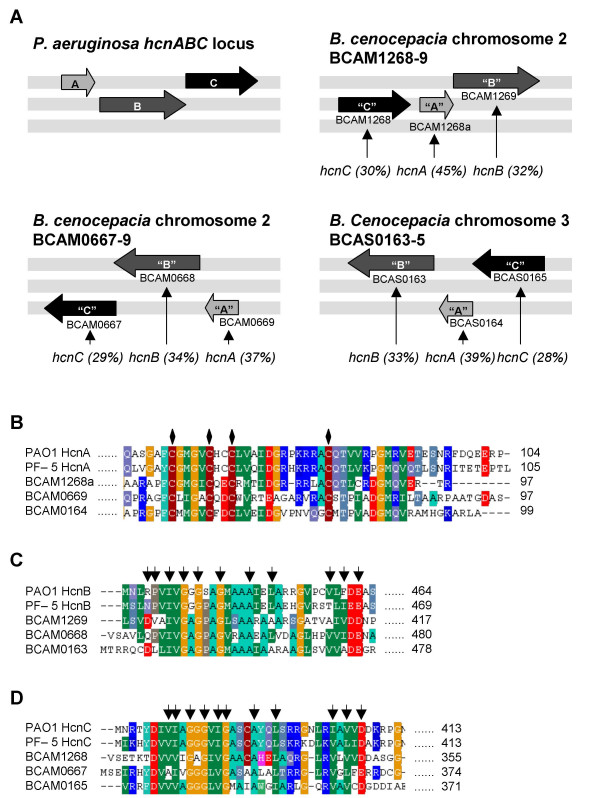Figure 1.
Putative hcnABC genes in B. cenocepacia. A. The P. aeruginosa cyanide synthase enzyme complex is coded for by the hcnABC gene locus. B. cenocepacia has three sets of possible homologues of the P. aeruginosa hcnABC genes. The organisation of the P. aeruginosa hcnABC locus is shown in the top left panel followed by the three sets of B. cenocepacia putative homologues; two of which are on chromosome two and one on chromosome three. The grey bars indicate the reading frame with the top being +/- 1, middle +/- 2 and bottom +/- 3; the arrows indicate if the genes are on the coding (left to right) or complement (right to left) strands. The percentage identity of the product of each putative gene to their P. aeruginosa HcnABChomologue is shown in labels underneath each panel. The Putative Bcc cyanide synthase proteins have conserved Fe-S (HcnA) and ADP binding motifs (HcnB and HcnC). B., C. and D. ClustalX alignments of putative B. cenocepacia J2315 cyanide synthase protein sequences with hydrogen cyanide synthases from P. aeruginosa (PAO1) and P. fluorescens (PF-5). B. Sequence of HcnA C-terminal from PAO1 and PF-5 aligned with B. cenocepacia putative proteins, BCAM01268a, BCAM0669 and BCAS0164. Diamonds indicate a potential Fe-S binding site at 4 cysteine residues in HcnA. C. Sequence of the start of HcnB from PAO1 and PF-5 aligned with B. cenocepacia putative proteins BCAM01269, BCAM0668 and BCAS0163. D. Sequence from the start of HcnC sequence from PAO1 and PF-5 aligned with B. cenocepacia putative proteins BCAM01268, BCAM0667 and BCAS0165. Arrows indicate eleven amino acid ADP-binding motif in HcnB and HcnC.

